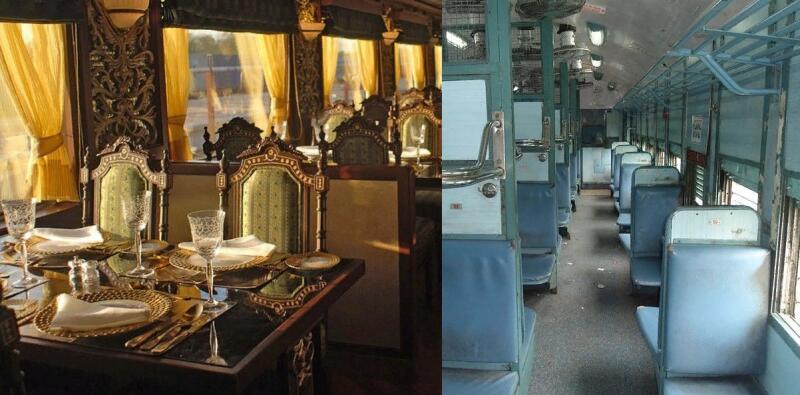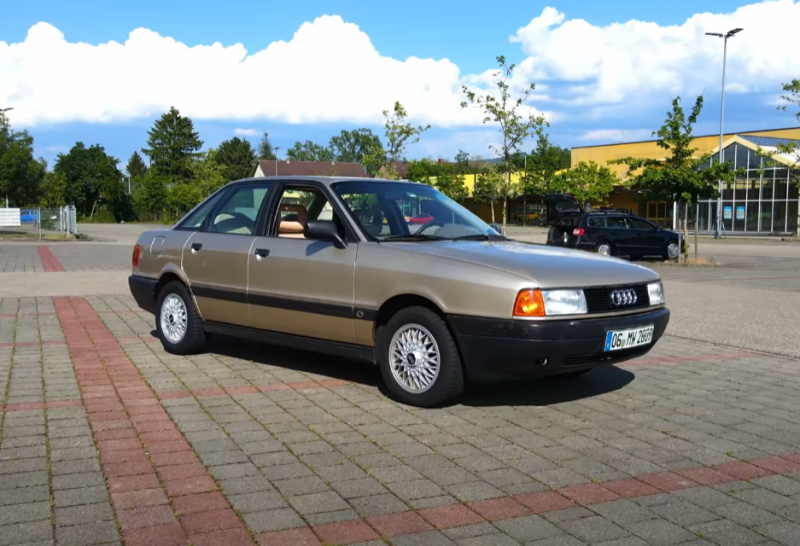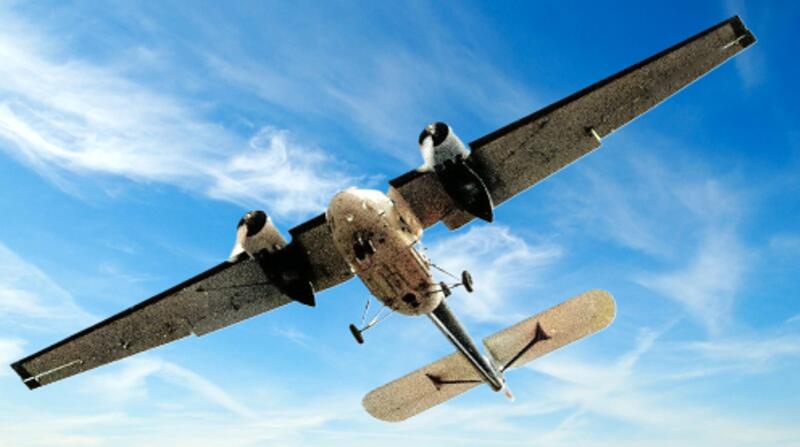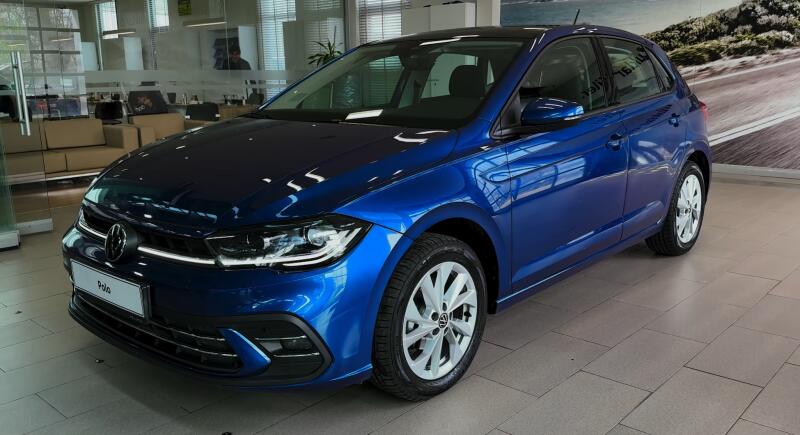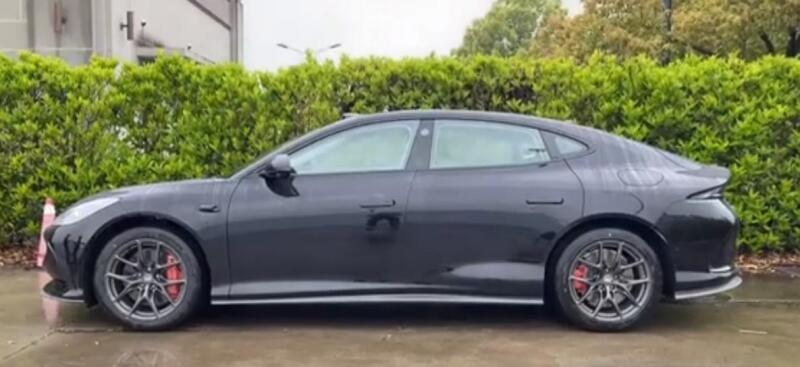More than 90% of the entire railway industry of the country is under the control of the state national operator Indian Railways.
Route network and rolling stock
Passenger traffic on Indian railways covers the entire territory of the country, including the remote foothills of the Himalayas. There is a docking with neighboring countries: Pakistan, Nepal and Bangladesh. There is also a train ferry to the island of Sri Lanka. However, there are no international passenger trains.

A typical train in India. Photo: youtube.com
The main highways traditionally connect the capital of India and the largest cities of the country. On routes from New Delhi to Kolkata, Chennai and Mumbai, special Rajdhani Express trains run daily.
Gauge gauges on Indian railways are varied. There are five options for the railroad tracks that do not fit together. Most of the trains move on a wide gauge of 1676 mm. In addition, there are several narrow-gauge track sections.

Nilgiri mountain railway with 1000 mm gauge. Photo: youtube.com
More than 17 km of 000 mm wide railroad tracks have been laid in the southeast of the country, and unique tracks with a gauge of 1000 and 762 mm have been built in mountainous regions. Since 610, the construction of a high-speed highway according to the European standard 2017 mm from Ahmedabad to Mumbai has been underway. In India, only a fifth of the railways are electrified, so most of the locomotive fleet is occupied by diesel locomotives of local production. Indian railways do not refuse steam traction either. About 1435% of the locomotive fleet are steam locomotives.

Indian steam locomotive on a regular flight. Photo: youtube.com
In large cities, electric trains are operated on electrified sections of the track, which are very popular among local residents. It is better for a tourist who is not accustomed to the Indian lifestyle to refrain from traveling by local train during rush hour.
The carriages of most Indian trains can hardly be called comfortable, with the exception of tourist trains and Rajdhani Express. Local residents are unassuming in terms of comfort and move in very shabby wagons. Therefore, when buying a ticket, you need to pay for the class of service, which will be discussed below.
At the moment, the national carrier is actively updating the fleet of wagons, including with the participation of our country. The Transmashholding consortium won a tender for the supply of 120 electric trains to India for a total amount of more than $1,6 billion. It is assumed that Russian Orioles will soon run in the largest cities of the country.
Classes of carriages in Indian trains
An uninitiated foreign tourist will easily get confused in the classes of Indian carriages. And this is no wonder - after all, unlike the usual reserved seats in Russia, coupes and SVs, there are more than 30 types of service here. However, five main classes can be distinguished among them; it is better for a tourist not to purchase tickets for other types of carriages.
The classic air-conditioned compartment cars on Indian railways are first class. They are not included in all trains, because they are not popular because of the price, which is comparable to the cost of an air ticket. This is the only type of carriage where passengers travel in isolated compartments. Each room can have two or four shelves, and it is impossible to calculate in advance which compartment the ticket was bought in.

First class compartment on an Indian train. Photo: youtube.com
The most numerous second class is divided into several subclasses depending on the level of comfort. The most expensive of them, but at the same time about eight times cheaper than the first class, is the second class with air conditioning and two 2AC shelves. Accommodation in such cars is identical to the Russian reserved seat. The salon is divided into four-seater sections, separated by curtains from the corridor, there are also paired side seats. Quite wealthy people usually ride in such cars, they give out clean linen and cleaners work regularly.
A trip in the 3AC class will cost a third less. The cabin of such a car is similar to the previous class, however, in the sections of the car, the shelves are placed in 3 tiers. In total, 9 passengers are accommodated in 72 six-seater semi-compartments and side bunk seats. The windows in the carriages do not open, but the air conditioner works. It is better to take your own linen in such a car, as they may not give out too clean.
Most Indians travel around the country in second sleeping class without air conditioning, which is designated SL (sleeper class). Shelf arrangement is similar to class 3AC. Outwardly, such cars are easy to distinguish by the presence of bars on the windows.

Sleeper class car exterior. Photo: Ravi Dwivedi/wikimedia.com
There are no air conditioners in this class, they are successfully replaced by the absence of windows and the operation of ceiling fans. The main advantage of such cars is the price. This is the cheapest way to travel in India. Underwear in the SL class is not issued, but poor Indians are satisfied with this level of comfort.
The cheapest way to travel on Indian railways is to take a General class carriage, designated GN. These are cars with seats, which are part of both suburban trains and all long-distance trains. Tickets for such a carriage are usually purchased at the station before departure, if there are no other seats.

Exterior of a general class car. Photo Adityamadhav83/wikimedia.org
Occupancy is practically unlimited, so local residents are accommodated in the aisles and vestibules, and sometimes hang from the doors of the car. Most trains have separate General class carriages for women.
On trains that follow during the day, there are higher-class seated cars with airplane-type seats and air conditioning, but tickets for such flights should be purchased in advance.
All classes and types of carriages have four toilets. They are placed in pairs at the ends of the cabin: one for Europeans and one for Indians. Toilet paper is not provided, but the bathrooms are often cleaned and kept relatively clean.
Tourist trains run along the railways of India and amaze with their luxury. A trip in such trains can cost several thousand dollars.

The dining car of the Maharajas' Express train. Photo Simon Pielow / wikimedia.org
The most luxurious of them proudly bears the name "Express of the Maharajas", a trip on it costs from 900 US dollars per day. But we will talk about it in one of our next publications.
How much does it cost and how to buy a tourist ticket for an Indian train
Travel in the most massive class and cheap SL in a regular train costs 0,25 rupees (30 Russian kopecks) per 1 kilometer. For example, travel from New Delhi to Mumbai by night train will cost 620 rupees (730 rubles). A ticket to a more comfortable AC3 class with linen costs almost three times as much - 1630 rupees (1900 rubles), but still cheaper than on a Russian Railways train for a similar distance. True, the comfort is different.
A first-class trip will cost 3955 rupees (4700 rubles) on a regular train or 5600 rupees (6700 rubles) on the branded Rajani Express. This is comparable to the price of a two-hour flight on Air India.

Rajani Express New Delhi - Mumbai. Photo by Nikhil B/wikimedia.org
Tickets for a foreign tourist on an Indian train can be purchased in three ways. The easiest and at the same time expensive is to contact special agencies. Railway ticket sales offices are available in all major cities. But their employees can easily triple the original ticket price, taking advantage of the foreigner's ignorance.
At the stations of major cities, there are special offices where you can buy train tickets for a quota specially allocated for foreign tourists. They are called the International Tourist Bureau and are available at the stations of Calcutta, New Delhi, Varanasi and several other cities. Such offices will be useful if there are no more regular tickets for good cars at the box office. In this case, the overpayment for the service will be minimal.
Finally, the third and most familiar way is to buy on the official website of Indian Railways. Previously, only happy owners of an Indian SIM card could purchase tickets in this way. Since 2018, the service has moved to a new platform and is available to everyone. Resource address: www.irctc.co.in.

Official website of Indian Railways
For registering a user with a foreign number, the service charges a commission of 100 rupees, the process itself will not raise questions from users.
High mountain trains, which have become a UNESCO cultural heritage site
Special mention deserves narrow-gauge lines laid in the remote and picturesque foothills of the Himalayas and Karakoram. There are three of them in India:
✅ Nilgiri mountain railway with a gauge of 1000 mm
✅ Himalayan route Siliguri - Darjeeling with a gauge of 610 mm
✅ Kalka-Shimla road with 762 mm gauge
All mentioned railways have the status of the world cultural heritage of UNESCO and each is unique in its own way. For example, there are 96 tunnels and 103 incredible curves along just 900 km of the Kalka-Shimla route, and St. Petersburg will envy the number of bridges of this railway. There are over 800 of them here.

Mountain narrow-gauge railways are unusually picturesque. Photo: Joyson92/wikimedia.org
The fare on narrow-gauge railways differs from the price of a ticket for ordinary passenger trains. The most expensive travel is on the Himalayan route. The movement here is organized based on tourists. For a first class ticket for a train consisting of two steam-powered cars for a distance of 79 km from Sisliguri to Darjeeling, you will have to pay 1100 rupees.
For locals, some of the trains are hooked to a wagon resembling a World War II bus, which can accommodate only 14 passengers.
In general, Indian passenger trains anywhere in the country will leave a lasting impression on the Russian traveler. Authentic carriages, sociable locals and picturesque views outside the window guarantee no less positive emotions than staying in a hotel in Goa.
